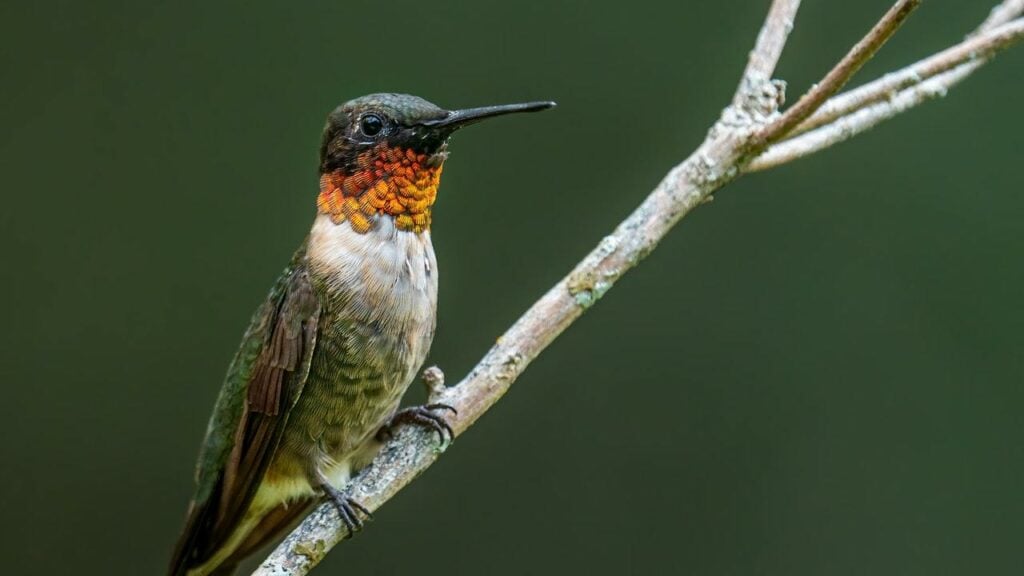Hummingbirds are commonly found in the Americas and thrive in tropical areas. These birds are not intentionally aggressive, in fact, when they feel threatened, they tend to flee than fight. They are known for their small stature and wing speed. But did you know they had big brains?
Hummingbird brains are 4.2% of their total weight, this is twice as large as human brains, which are just 2%. They remember their travel routes and the flowers they visited in the previous year.
The Hummingbird and Their Greedy Appetite
Hummingbirds have a rapid metabolism, about 100 times faster than elephants. To stay alive, they eat nectar and insects such as ants, gnats, mosquitoes, and wasps throughout the day.
These hummers feed every 10 to 15 minutes and scout for food between 1,000 and 2,000 blossoms every day. (Source: We Love Hummingbirds)
Do Hummingbirds Regularly Migrate?
Hummingbirds are the world’s tiniest birds, but their migrations can cover hundreds or thousands of kilometers. Only a few hummingbird species regularly move, even though there are over 300 species.
Most North American hummingbirds move between northern breeding grounds and southern wintering sites on a seasonal basis.
Like many other birds, Hummingbirds migrate alone and do not move in seasonal flocks. They migrate throughout the day and rest at night, staying low in the air to watch for eating possibilities.
Hummingbird feeders who have been feeding them for years realize that their migration patterns can be highly predictable. Individual birds frequently migrate at the same time each year, coming and departing from the same yards in only a few days.
They acquire up to 40% of their body weight in preparation for their adventure. Hummingbirds may fly up to 23 miles each day, according to studies.
The Rufous Hummingbird makes the longest journey of the species, flying over 3,000 miles from Alaska or Canada to Mexico. The Ruby-Throated Hummingbird, on the other hand, may fly up to 500 kilometers nonstop across the Gulf of Mexico. (Source: We Love Hummingbirds)
Are These Birds Anti-Social?
During migration, hummingbirds do not fly as a flock but rather singly. They also have to compete for food. However, the breeding season is when these charming tiny birds become furious combatants.
Male hummingbirds have even been observed attempting to stab each other in the throat to compete for ladies with their beaks.
They are extremely aggressive towards other birds and have attacked them. Backyard birders are frequently visited by a single dominant hummingbird who guards all feeders and chases away prowlers.
In ancient Mexico, hummingbirds were connected with nobility and warriors. Some Mexican tribes think these feathery creatures manifest as a deceased person or a messenger from the afterlife. In mythology, they are also known as a fire-binger, a healer, or a ghost that aids those in need. (Source: We Love Hummingbirds)
Eagle-Eyed Hummingbirds
These hummers have exceptional vision and hearing. They’re even capable of detecting UV radiation! Hummingbirds use their sight to find flowers, and red tubular blossoms are their favorites. Unfortunately, Hummingbirds do not have a sense of smell, but their vision and hearing make up for it. (Source: We Love Hummingbirds)
